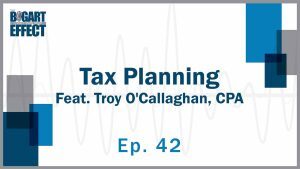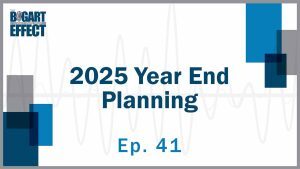Love them or hate them, required minimum distributions (RMDs) play a significant role in a retiree’s income and tax planning. Lately, their importance has increased: New laws in the past few years changed the rules. To help you understand why that matters, we’re diving into how RMDs work and why they matter to your overall retirement plan.
What are RMDs?
The IRS requires seniors to take money out of their retirement accounts each year. In their words: You cannot keep funds in your retirement account indefinitely. When you reach a certain age (73), you must start withdrawing money from any non-Roth retirement accounts. These include 401(k)s, 403(b)s, IRAs, SEP IRAs, and so on.
These withdrawals are subject to federal income tax. Plus, they require you to sell investments held within those retirement accounts. These two factors make RMDs an area where a financial advisor and tax professional may be able to help you get the most out of each distribution.
For instance, if you have several IRAs and 401(k)s, you must calculate the total required distribution by account type. You’d have a separate total for IRAs and 401(k)s. Once you have that total, however, it doesn’t matter which account you take the actual withdrawal from.
You can also choose which investments to sell to cover that withdrawal. A financial advisor may be able to help you sell underperforming investments while ensuring your remaining funds are invested to match your retirement goals.
An advisor can also help you time your distributions. While you must withdraw the full amount prior to December 31, you can take these distributions myriad ways: monthly, quarterly, lump sums, and so on.
How are RMDs calculated?
It’s unlikely you’ll need to calculate your own RMDs. Often, your retirement plan administrator or financial advisor does this for you. But it can be helpful to understand how the IRS goes about these calculations.
Each year, the IRS will assign you a number—known as a life expectancy factor—based on your age, your spouse’s age, and the balances in your accounts. Your RMD is calculated by dividing the balance in your retirement account(s) as of December 31 the previous year by this life expectancy factor. That’s your RMD.
What happens if I don’t take RMDs?
If you don’t take an RMD in a given tax year, the IRS reserves the right to charge you a penalty—up to 25% of the amount you failed to withdraw. If you manage to correct the mistake “in a timely manner,” the penalty may be reduced to 10%.
If you withdraw more money than the IRS requires, there are no penalties.
If you don’t need the income, however, there are a few ways to think about these distributions. First, you may be able to donate the equivalent amount to a qualified charity—known as a qualified charitable distribution (QCD). The logistics of this can be tricky, so it’s helpful to work with a financial and/or tax professional.
Similarly, you may be able to roll the amount of your RMD over into a Roth IRA. This way, the IRS still collects the income tax on the distribution, but your money stays invested. Plus, any future growth on those investments will accrue tax-free.
We can help you talk through how either of these decisions might impact your overall retirement plan, as well as any plans you may have to leave an inheritance to family or a legacy gift to organizations.
Changes to RMDs
In late 2019, Congress passed the Setting Every Community Up for Retirement Enhancement (SECURE) Act as part of year-end appropriations. The SECURE Act raised the age at which retirees needed to start taking RMDs to 72.
Congress passed a second SECURE Act (called, aptly, SECURE Act 2.0) at the close of 2022. As with the first SECURE Act, the changes are broad, and different sections are designed to help different groups of people. But the new law once again updated the rules around RMDs. As of 2023, the starting age is 73, and in 2033, the age increases to 75.
To better understand how this legislation affected RMDs, and might impact other areas of your financial plan, we recommend reading through our full white paper on SECURE 2.0. We can also go over any specific questions you might have in our next planning meeting.




